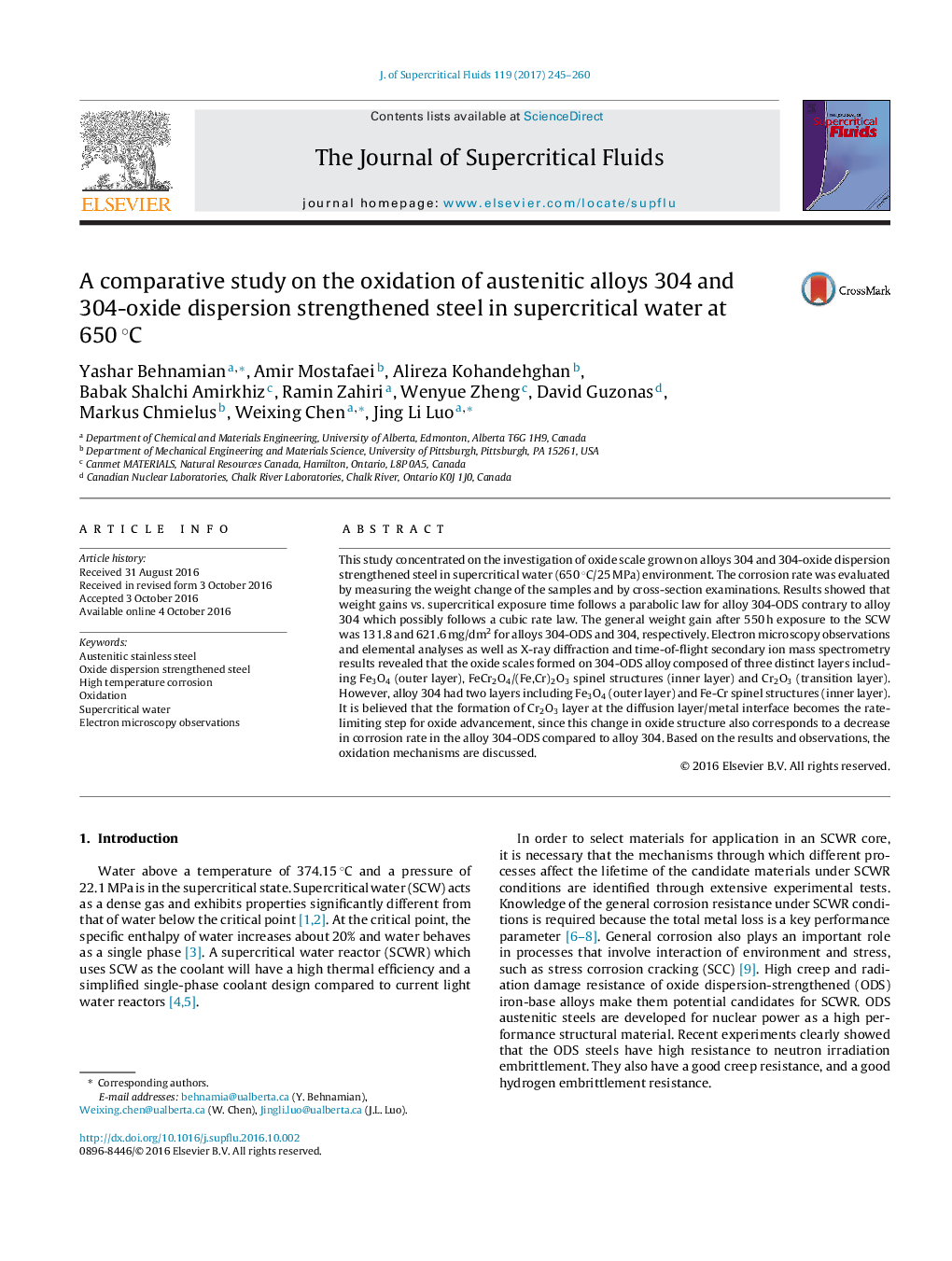| کد مقاله | کد نشریه | سال انتشار | مقاله انگلیسی | نسخه تمام متن |
|---|---|---|---|---|
| 4909863 | 1427358 | 2017 | 16 صفحه PDF | دانلود رایگان |

- Oxidation of alloy 304 and 304-ODS steel in supercritical water at 650 °C/25 MPa.
- Weight gain of 131.8 and 621.6Â mg/dm2 after 550Â h for alloys 304-ODS and 304, respectively.
- The oxide scales on 304-ODS alloy composed of Fe3O4, FeCr2O4/(Fe,Cr)2O3 and Cr2O3.
- Oxidation followed a parabolic law for alloy 304-ODS and a cubic law for alloy 304.
- Formation of Cr2O3 transition layer is rate-limiting for oxidation of alloy 304-ODS.
This study concentrated on the investigation of oxide scale grown on alloys 304 and 304-oxide dispersion strengthened steel in supercritical water (650 °C/25 MPa) environment. The corrosion rate was evaluated by measuring the weight change of the samples and by cross-section examinations. Results showed that weight gains vs. supercritical exposure time follows a parabolic law for alloy 304-ODS contrary to alloy 304 which possibly follows a cubic rate law. The general weight gain after 550 h exposure to the SCW was 131.8 and 621.6 mg/dm2 for alloys 304-ODS and 304, respectively. Electron microscopy observations and elemental analyses as well as X-ray diffraction and time-of-flight secondary ion mass spectrometry results revealed that the oxide scales formed on 304-ODS alloy composed of three distinct layers including Fe3O4 (outer layer), FeCr2O4/(Fe,Cr)2O3 spinel structures (inner layer) and Cr2O3 (transition layer). However, alloy 304 had two layers including Fe3O4 (outer layer) and Fe-Cr spinel structures (inner layer). It is believed that the formation of Cr2O3 layer at the diffusion layer/metal interface becomes the rate-limiting step for oxide advancement, since this change in oxide structure also corresponds to a decrease in corrosion rate in the alloy 304-ODS compared to alloy 304. Based on the results and observations, the oxidation mechanisms are discussed.
365
Journal: The Journal of Supercritical Fluids - Volume 119, January 2017, Pages 245-260